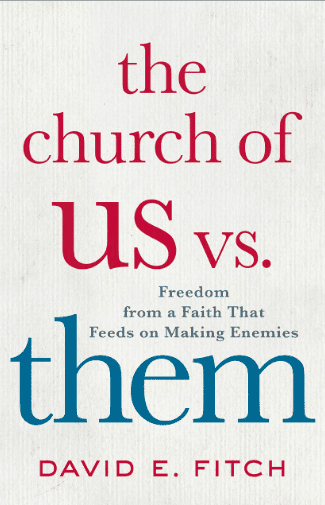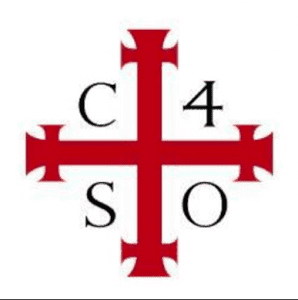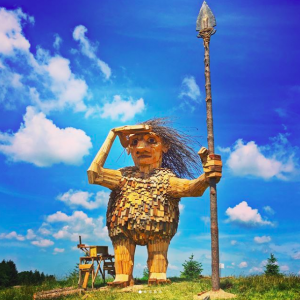 In 1994 a historic moment in the American church (purportedly) occurred: a rapprochement between major evangelicals and Catholics. The signed statement of the Evanglicals and Catholics Together, about “The Christian Mission in the Third Millennium,” as Ross Douthat observes, was a unity but “ultimate unity against a common threat” (see his book Bad Religion, p. 114).
In 1994 a historic moment in the American church (purportedly) occurred: a rapprochement between major evangelicals and Catholics. The signed statement of the Evanglicals and Catholics Together, about “The Christian Mission in the Third Millennium,” as Ross Douthat observes, was a unity but “ultimate unity against a common threat” (see his book Bad Religion, p. 114).
What led to this supposedly historical connection? “By contending together for Christian principles in the public square, they had discovered how much theology they had in common” (115). Well, this one hits home: politics leads to theological unity. Is this what we are observing here? Is it politics or theology? Douthat thinks not. He thinks they had found unity, not in accommodation, but in resistance. Not so fast, I want to say. I wonder — here aloud — if resistance in the public sector is a species of the same accommodation. What say you?
What has become of the impact of the resistance? Which way is forward?
James Davison Hunter’s “faithful witness”? Jonathan Merritt’s “third way”? Douthat’s return to orthodoxy?
Roe v. Wade cracked open a new world for many Catholics: prior to the landmark Supreme Court (reckless) decision, Catholics and Mainliners were on the accommodation road together; the abortion decision turned many Catholics — like Michael Novak — away from accommodation and toward resistance, and led Catholics to cooperation with evangelicals. The same path was traveled by John Paul II and Cardinal Ratzinger (now Pope Benedict XVI): an early leaning toward accommodation became a mature resistance. Instead of redefinition of the church and its theology, John Paul II reiterated and reaffirmed the ancient faith of the Catholics, while also having an amazingly effective pastoral presence on issues of great concern, like the church’s relationship with Jews. Many Catholics have rallied behind this resistance.
And they joined evangelicalism’s political turn in the 70s and 80s.
Evangelicals mobilized into resistance postures: against abortion, public school sex ed, gay rights and the ERA. Douthat notes the significance of Francis Schaefer who adopted a co-belligerency posture alongside Catholics. With this one Douthat irons a deep, ironic crease into the fabric of evangelicalism’s sense of power: “From the Reagan era onward, Evangelical voters became the Republican Party’s loyal foot soldiers” (123).
Douthat observes the social justice concerns of many young evangelicals and their rediscovery of 19th century evangelical social activism.
Evangelicalism entered a period of reconsideration, including inerrancy (Rogers, McKim, Lindsell). Packer’s openness to evolutionary readings of Genesis 1 — these were trends of pushing away from fundamentalism. The result: evangelicalism replaced the mainline churches as the most significant religious voice in American culture.
ECT — Evangelicals and Catholics Together. In this Douthat sees the shift. John Neuhaus and Chuck Colson. Douthat thinks evangelicalism’s pietistic and revivalistic, that is to say it’s personal faith, was deeply influential on Catholicism. The Pope’s World Youth Days. Etc.
But where the cultural impact? Where the presence?
Then the revelations in the Catholic churches among priests … all the way to the Vatican. Horrific coverups and moral failings. And the revelations among evangelicals … Jimmy Bakker and Jimmy Swaggart and Ted Haggard. The slow bleed of attendance decline occurs during the surge of both the rise to the public sector and the sordid revelations.
And George Bush’s presence in the White House, which was the “victory” the cultural warriors wanted … what did it accomplish for those very issues? Where, as Mark Noll has observed, was the evangelical mind in all this? He quotes David Wells, too. It has become a “para” movement, not an ecclesially-formed gospel theology. So Douthat observes that evangelicals are searching for their “next godly Evangelical come to save the republic from itself” and he mentions Palin, Bachmann, and Perry (141).
For too many evangelicalism is the Republican Party at prayer.
We now sit in a county with too many “nones.” What has become of the impact of the resistance? Which way is forward?
James Davison Hunter’s “faithful witness”? Jonathan Merritt’s “third way”? Douthat’s return to orthodoxy?










